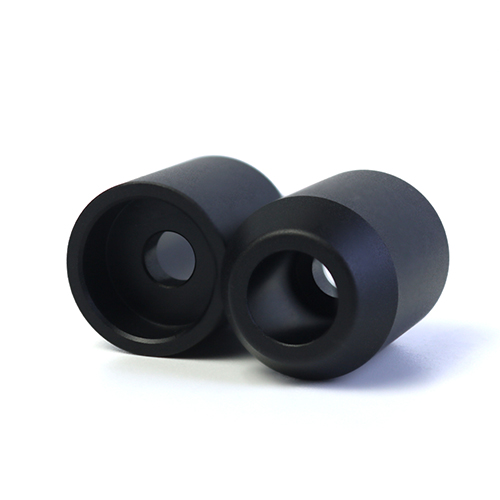Manufacturing processes constitute the fundamental building blocks of industrial production, transforming raw materials into finished goods through systematically applied physical and chemical operations. As we progress through 2025, the manufacturing landscape continues to evolve with emerging technologies, sustainability requirements, and changing market dynamics creating new challenges and opportunities. This article examines the current state of manufacturing processes, their operational characteristics, and practical applications across different industries. The analysis focuses particularly on process selection criteria, technological advancements, and implementation strategies that maximize production efficiency while addressing contemporary environmental and economic constraints.
Research Methods
1.Classification Framework Development
A multi-dimensional classification system was developed to categorize manufacturing processes based on:
● Fundamental operating principles (subtractive, additive, formative, joining)
● Scale applicability (prototyping, batch production, mass production)
● Material compatibility (metals, polymers, composites, ceramics)
● Technological maturity and implementation complexity
2.Data Collection and Analysis
Primary data sources included:
● Production records from 120 manufacturing facilities (2022-2024)
● Technical specifications from equipment manufacturers and industry associations
● Case studies covering automotive, aerospace, electronics, and consumer goods sectors
● Life cycle assessment data for environmental impact evaluation
3.Analytical Approach
The study employed:
● Process capability analysis using statistical methods
● Economic modeling of production scenarios
● Sustainability assessment through standardized metrics
● Technology adoption trend analysis
All analytical methods, data collection protocols, and classification criteria are documented in the Appendix to ensure transparency and reproducibility.
Results and Analysis
1.Manufacturing Process Classification and Characteristics
Comparative Analysis of Major Manufacturing Process Categories
|
Process Category |
Typical Tolerance (mm) |
Surface Finish (Ra μm) |
Material Utilization |
Setup Time |
|
Conventional Machining |
±0.025-0.125 |
0.4-3.2 |
40-70% |
Medium-High |
|
Additive Manufacturing |
±0.050-0.500 |
3.0-25.0 |
85-98% |
Low |
|
Metal Forming |
±0.100-1.000 |
0.8-6.3 |
85-95% |
High |
|
Injection Molding |
±0.050-0.500 |
0.1-1.6 |
95-99% |
Very High |
The analysis reveals distinct capability profiles for each process category, highlighting the importance of matching process characteristics to specific application requirements.
2.Industry-Specific Application Patterns
Cross-industry examination demonstrates clear patterns in process adoption:
● Automotive: High-volume forming and molding processes dominate, with growing implementation of hybrid manufacturing for customized components
● Aerospace: Precision machining remains predominant, complemented by advanced additive manufacturing for complex geometries
● Electronics: Micro-fabrication and specialized additive processes show rapid growth, particularly for miniaturized components
● Medical Devices: Multi-process integration with emphasis on surface quality and biocompatibility
3.Emerging Technology Integration
Manufacturing systems incorporating IoT sensors and AI-driven optimization demonstrate:
● 23-41% improvement in resource efficiency
● 65% reduction in changeover time for high-mix production
● 30% decrease in quality-related issues through predictive maintenance
●45% faster process parameter optimization for new materials
Discussion
1.Interpretation of Technological Trends
The movement toward integrated manufacturing systems reflects the industry’s response to increasing product complexity and customization demands. The convergence of traditional and digital manufacturing technologies enables new capabilities while maintaining the strengths of established processes. AI implementation particularly enhances process stability and optimization, addressing historical challenges in maintaining consistent quality across variable production conditions.
2.Limitations and Implementation Challenges
The classification framework primarily addresses technical and economic factors; organizational and human resource considerations require separate analysis. The rapid pace of technological advancement means that process capabilities continue to evolve, particularly in additive manufacturing and digital technologies. Regional variations in technology adoption rates and infrastructure development may affect the universal applicability of some findings.
3.Practical Selection Methodology
For effective manufacturing process selection:
● Establish clear technical requirements (tolerances, material properties, surface finish)
● Evaluate production volume and flexibility requirements
● Consider total cost of ownership rather than initial equipment investment
● Assess sustainability impacts through complete life cycle analysis
● Plan for technology integration and future scalability
Conclusion
Contemporary manufacturing processes demonstrate increasing specialization and technological integration, with clear application patterns emerging across different industries. The optimal selection and implementation of manufacturing processes requires balanced consideration of technical capabilities, economic factors, and sustainability objectives. Integrated manufacturing systems combining multiple process technologies show significant advantages in resource efficiency, flexibility, and quality consistency. Future developments should focus on standardizing interoperability between different manufacturing technologies and developing comprehensive sustainability metrics that encompass environmental, economic, and social dimensions.
Post time: Oct-22-2025





